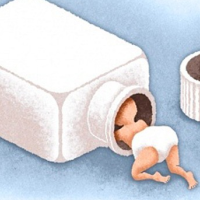Sharp Rise in Opioid Poisonings among Toddlers and Teens
 (graphic: Getty Images)
(graphic: Getty Images)
By Donna De La Cruz, New York Times
The number of children being hospitalized because of prescription opioid poisoning has risen sharply since 1997, especially among toddlers and older teenagers, researchers from Yale School of Medicine report.
The study, published Monday in JAMA Pediatrics, analyzed data from the Kids’ Inpatient Database, a national database of pediatric hospitalizations. Looking at data gathered every three years from 1997 through 2012, they identified 13,052 instances in which children and teens ages 1 to 19 had been hospitalized for prescription opioid poisonings; 176 of them had died.
Among children ages 1 to 4, hospitalizations for opioid poisoning increased 205 percent. For teens 15 to 19, hospitalizations rose 161 percent.
Children ages 1 to 4 were primarily hospitalized for accidentally ingesting opioids, while the majority of teens older than 15 took the drugs with the intent to commit suicide, said Julie R. Gaither, the study’s lead author and an epidemiologist and postdoctoral fellow at Yale. She said other teenagers probably overdosed when taking the drugs for recreational purposes. She attributed the increase in poisonings among toddlers to parents or other adults within the household leaving pills within easy reach of young children.
Gaither said poisonings attributed to prescription opioids are now the leading cause of “injury-related mortality” in the United States, largely because of the wider use of the drugs in households nationwide. In 2012, doctors wrote 259 million prescriptions for opioid painkillers.
“The medical community needs to develop a safety plan for parents to store the pills and make their homes safe for their children,” Gaither said. “Physicians prescribing medications to an adult, or even a teen, need to ask if there are younger kids in the household and, if so, to make sure they know how potent the drugs are and to keep them out of reach of kids.”
Gaither said the pills should be more securely packaged and better labeled.
“Oftentimes, parents are not told what to do with leftover medication, and that means it is left sitting around your house where your kids can find them,” said Sarah Clark, co-director of the C.S. Mott Children’s Hospital National Poll on Children’s Health.
To Learn More:
National Trends in Hospitalizations for Opioid Poisonings among Children and Adolescents, 1997 to 2012 (by Julie R. Gaither, PhD, MPH, RN; John M. Leventhal, MD; and Sheryl A. Ryan, MD; et al; JAMA Network)
Congress Takes Preliminary Steps to Curb Prescription Drug Abuse (by Alan Fram, Associated Press)
U.S.: 5% of World Population; 80% of Opioid Consumption (by Steve Straehley, AllGov)
Push to Require Physician Use of National Pill-Tracking Database Designed to Curb Opioid Abuse (by Matthew Perrone, Associated Press)
- Top Stories
- Unusual News
- Where is the Money Going?
- Controversies
- U.S. and the World
- Appointments and Resignations
- Latest News
- Can Biden Murder Trump and Get Away With it?
- Electoral Advice for the Democratic and Republican Parties
- U.S. Ambassador to Greece: Who is George Tsunis?
- Henry Kissinger: A Pre-Obituary
- U.S. Ambassador to Belize: Who is Michelle Kwan?






Comments